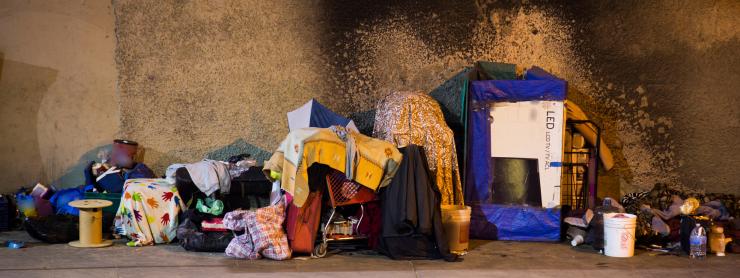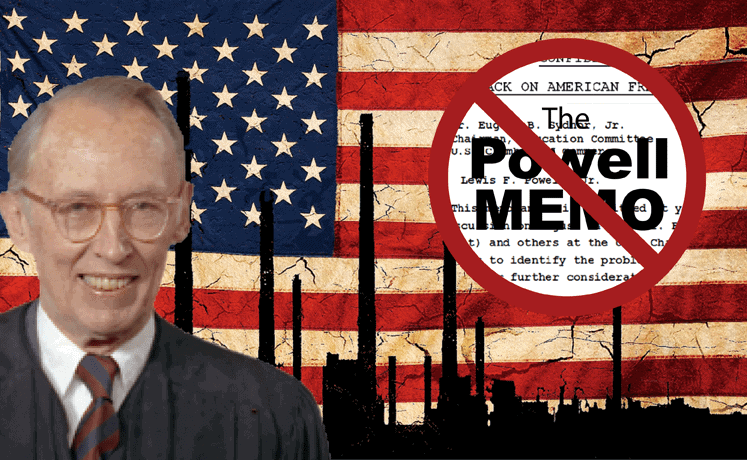We are careening into a bloodbath in the United States. This is not hyperbole. The despair and suffering of the working class, the regular people in the United States is on the verge of running over.
Why, you ask? It’s simple: After roughly four years of universal forbearance, the Biden administration has elected to resume collection of federal student loan payments. A freight train of (entirely preventable by the President) financial burdens will soon impact 45 million Americans. When it hits, like a real freight train, it can’t just stop, rather it keeps rolling down the rails. That’s 45 million (45,000,000) people (about twice the population of New York) who are likely to already be facing burdensome private obligations that are about to have everything- from paying rent to affording groceries and gas to get to work- derailed by the decisions of the Biden-Harris administration and Congress.
Let’s look at the way the Biden-Harris administration has handled student loans, and whether they’ve helped or harmed those affected by the crisis. Before we can do that, however, it is important to know where we are now and some of how we got there.
The average monthly payment for a recent bachelor’s degree-recipient is $284. The median monthly loan payment among all student loan holders, regardless of degree earned, is $250. Every postsecondary student in the nation, including those who only enrolled for a certificate or associate degree, individually borrows at least $15,000 to pay for their classes.
Every graduate of a nonprofit university borrows on average $33,700 to complete their degree. Those who graduate from a for-profit university borrow on average $49,700 to complete their studies. Twenty years after initial attendance, at least half of all borrowers still owe $20,000 each on their balances. Do you see the result of these numbers? They paint a picture of loans that are impossible, by design, to pay off. If we use these averages, what kind of loan can you pay under the following calculation and still be reasonably expected to keep paying?
Principal → $37,338 | Yearly Payment → $3408 | Term → 20 years | Remaining Balance → $20,000
In other words, based on statistics alone, borrowers can do everything “right” or, more accurately, as expected and forced to do, paying $68,160 on a $37,338 loan, and still owe at least $20,000 two decades later. Regardless of the intentions of Congress in setting up this system, it was designed in a way to minimize what little income (labor value not taken by profit margins) most people earn, thereby nullifying disposable income before it can exist. In other words, the system of student loans maintains class stratification and weak labor relations.
Student debt is an intentionally onerous burden.
As for the expectations and coercion, if you’ve attended public K-12 in the past 30 or so years, you’re likely intimately and anecdotally aware of how K-12 education in the United States is a dual-pipeline. The expectation is that you go to college, or jail, or the military (via poverty draft) once out of high school. In fact, the threat of not making it and going to jail is used to implicitly reinforce the lesson that “everyone needs to go to college.”
In another article for Real Progressives, I discussed the concept of a “minimum acceptable compromise.” To summarize, a minimum acceptable compromise is the bare minimum result you’ll accept. You start by negotiating far above it, and you don’t accept an offer beneath it. For groups like the Debt Collective, it seems like universal student debt relief is their minimum acceptable compromise. The Debt Collective is the United States’ first and only debtors’ union. They’ve been instrumental in pushing the needle towards full cancellation of student loans. They also organize for cancellation of other unjust and burdensome debts, such as medical debt.
In the United States, the modern public-private student loan system with guaranteed federal loans and means-tested federal grants paid out to each student’s university account after enrollment is not how it has always been done. Instead, public universities were once effectively no- or low-cost, with the bulk of their funding coming from state and federal government monies, and in such quantities that they didn’t need much from any other source. In addition, a single summer’s minimum wage earnings could pay whatever leftover tuition existed for an entire academic year, even for “elite” schools. This began to change after the Civil Rights movement successfully ended the legality of school segregation. To maintain upward mobility through education as a “whites only” option, public schools, colleges, and universities across the nation were systematically defunded.
To bring us back to our current reality, we must look at how the Biden-Harris administration chose a mechanism that essentially guaranteed legal challenges. The Higher Education Act of 1965, as passed by Congress, vested in the Executive Branch the authority to unilaterally cancel all federal student loan balances through executive order. In other words, Biden, Obama, Trump, Bush, and any other President since 1965 could have removed everyone’s student loan balances by the stroke of a pen. In fact, the Debt Collective wrote the executive order for President Biden and ran a mass-contact campaign asking him to simply sign the order. If Biden or the Secretary of Education had signed it, the student loan crisis would be solved, at least temporarily.
Of course, if the federal government were only to cancel all existing student debts, it won’t prevent new debt from being created. That is obvious. However, this doesn’t mean we shouldn’t address the current crisis. Saying “if we cancel all the debts, people will still get student loans because we don’t fund education properly” is like saying “oh, well if I get new tires, my truck will still be unsafe to drive because we didn’t replace the brakes.” When necessary, do the tires and the brakes, right? Only doing the tires means I’ll still crash when my brakes fail completely, just like only cancelling student debt means economic misery and 21st-century serfdom will continue for future students. In other words, we must do what we can and keep fighting.
It’s the same thing with student debt. If it were possible to cancel all student debt and restructure higher education financing back into a publicly funded common good, we should do that, right? The good news is that it is possible. You’re probably wondering “how.”
First, we have to understand some money basics. The US dollar is, primarily, a tax credit. At the end of each year, everybody must pay some form of tax or suffer a penalty and possibly incarceration. The creator of the US dollar, the federal government, wants to incentivize certain production and activities, and jobs are created where people can do tasks to earn dollars against their tax liability, so they don’t suffer the negative penalties.
In fact, federal taxes are deleted upon receipt. When Congress approves spending through appropriations, the new USD is created and directly credited to the proper accounts and funds via the mechanism of the Federal Reserve. When the federal government collects taxes through the mechanism of the Internal Revenue Service, it destroys or deletes that currency on the backend. How can a destroyed dollar “pay for” anything? It can’t. To be clear, the US government wants certain projects done, and does not need to find its own currency.
Once we understand MMT, or Modern Monetary Theory, which is the hyper-accurate scientific description of how currency works, we understand that federal taxes do not and cannot fund federal spending. Meaning, the US is never constrained by lack of money because it is sovereign over the US dollar, which is a free-floating fiat currency. Because the federal government has a free-floating fiat currency, its real restraint is real resources and productive capacity. In other words, do we have the materials, infrastructure, and intellectual property to do “x”? If not, are they purchasable in the USD via domestic or international markets? If the answer to either of these questions is “yes” then it is feasible for the federal government to organize it. The other half of the equation is, do we have the labor power to achieve “x”? If not, can we organize immigration or raise wages to find that labor power? If the answer to either is yes, then it is doable for the federal government. Finally, if it is feasible and doable as determined by this equation, then it is affordable from the perspective of the United State federal government.
Feasible (yes) + Doable (yes) = Affordable (yes)
An interesting reality is that even though we know taxes don’t fund federal spending, every federal student loan was already fully “paid for” upon origination through the federal government. Interest on student loans, as well as to some degree the loans themselves, are both a poverty tax. Wealthy, or wealthy enough families don’t need student loans to put their kids through college. Congress approved appropriations that eventually became funding into a student’s college, trade school, or university account. This means that the money doesn’t need to be found anywhere for total, universal federal student loan relief, because it was already “found” when congress appropriated it into existence.
It was a political choice to structure higher education so that people needed to take out student loans. It is a political choice to keep things this way. We can do great things, including a student debt jubilee, but the political will has to be there.
For emphasis: Biden used an executive authority from the HEROES act to be repurposed towards means-tested, application based, partial relief. In doing so, he overstepped his Constitutional bounds- as Congress and not the executive branch has the sole power of the purse. The HEROES act does not grant the executive branch the necessary powers. Whereas, if he had used the existing authority under the Higher Education Act of 1965, where the relevant authority has been vested into the executive branch by Congress already, the loans would already be irrevocably gone.
The Higher Education Act vested in the Secretary of Education the unilateral authority to “compromise, waive, or release” any and all federal student loan balances. President Biden could formally instruct Education Secretary Miguel Cardona to waive all the student debt, or Secretary Cardona could do it on his own accord. The authority is there, waiting to be used.
Tertiary education used to be a mechanism of some opportunity. Student debt was justified in the idea that if you go to school, you will have boundless opportunity upon graduation. Now, those jobs of the future don’t exist. Any reason for college or university education has been nullified by neoliberalism. Not only is there no thriving economy, there is no opportunity for a decent job that provides a decent standard of living. Going to Vegas and gambling money from a private loan to fund your life from winnings is arguably a more balanced risk than going to school and “doing the right things” to “get a better job”.
Ask yourself: If Biden had the political will to do something about the student loan crisis, why didn’t he? In the words of President Biden on March 10th, 2020 (to a unionized electrical worker): “I don’t work for you!”
Why did President Biden instruct his administration use an objectively flimsier legal authority? Why was the decision made to use a combination of prior economic recovery programs and the redirection of remaining COVID-related funding? Why did the Biden-Harris administration choose to cancel only some of the debt for a fraction of the people affected? Why would they go with a strategy of making people apply for means-tested relief, which takes time and resources to process? Why not use the existing ironclad legal authority to immediately delete all the debt?
Delays owing to application processing gave Republican opposition time to create legal challenges. Using HEROES act authority is why the courts were ultimately able to strike down the partial cancellation scheme. If Biden had instead used the authority under the Higher Education Act of 1965, the loans could be cancelled overnight, with no application or processing time, and no cost to the federal government. President Biden or Secretary Cardona still have the option of using that authority. Why won’t they?
Sources and References:
- Average student loan payment
- Average student loan debt
- Minimum Acceptable Compromise
- What is the Higher Education Act —and could it still lead to student loan forgiveness?
- Biden Student Loan Forgiveness: Judge Blocks ‘Plan B’ Relief For Millions
- What is the HEROES Act?
- The Lie at the Heart of the States’ Case Against Student Debt Relief
- “Turning His Back on Student Debtors”: Biden’s Debt Deal Ends Freeze on Loan Payments for Millions






Spot on. Thank you for taking the time and effort pointing this truth out. Blessings.